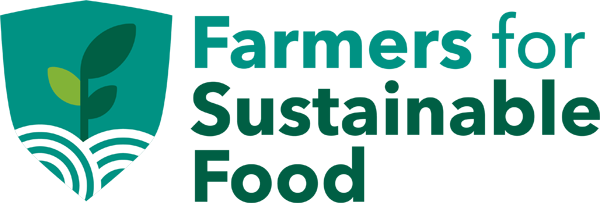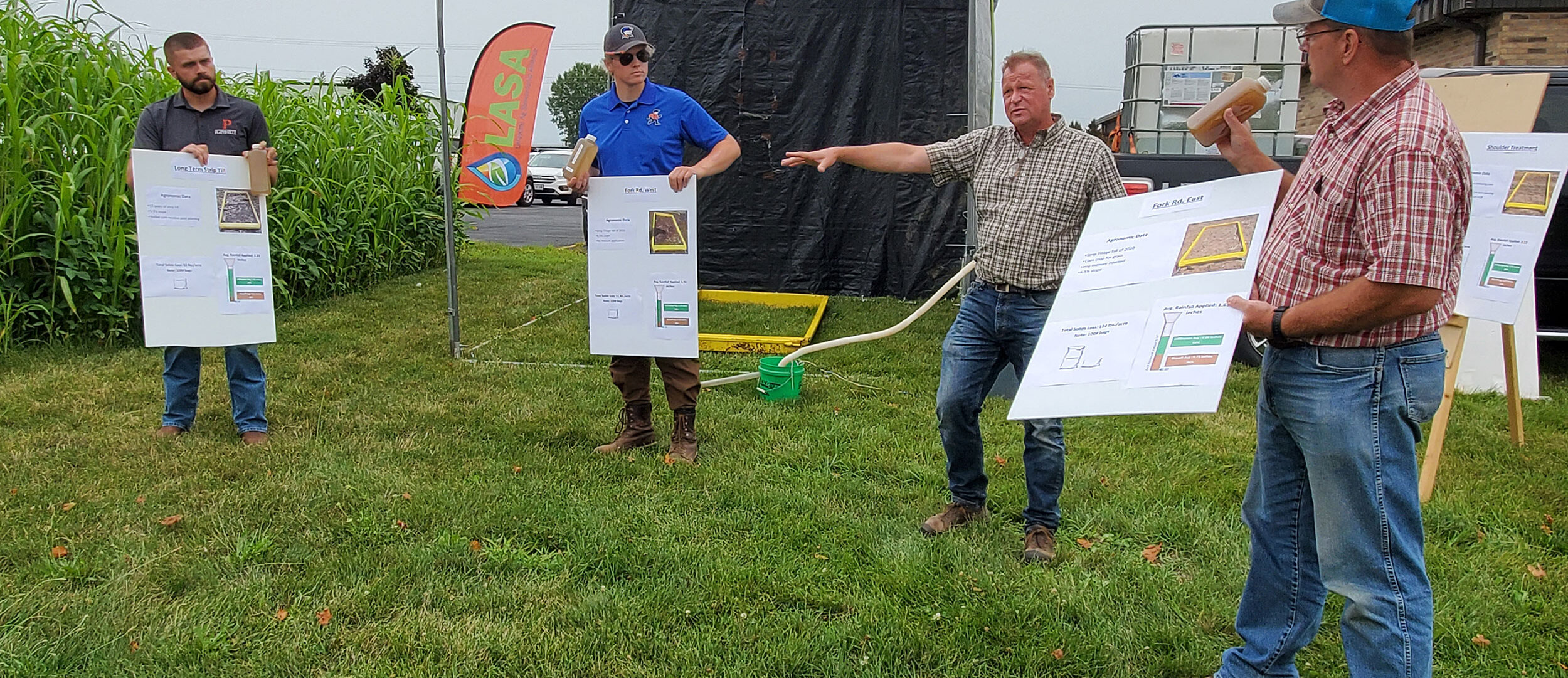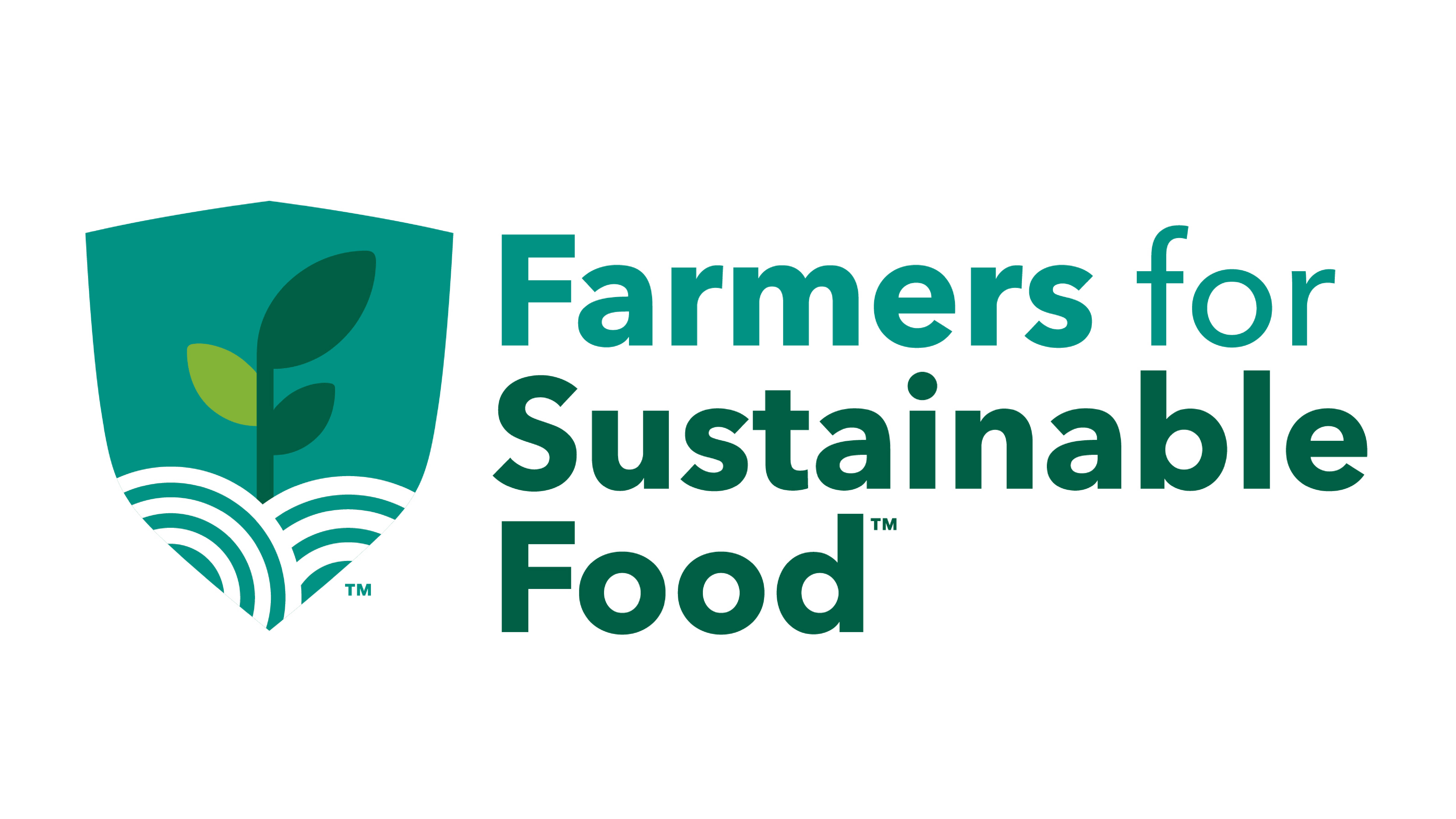Analysis: Farms in pilot project achieve positive results on national sustainability metrics
Wisconsin initiative measures environmental, financial impact of conservation
GREEN BAY, Wis. — Results from the first year of a nationally recognized farm-level sustainability project in southwestern Wisconsin were released today, and the partners in the initiative are encouraged by what they see.
The dozen participating farms demonstrated that their conservation practices contribute to significant reductions in environmental pollutants reaching streams and rivers.
The analysis is part of a pilot project aligned with a first-of-its-kind framework for sustainability projects that helps farmers determine what conservation practices are most effective for their individual farms and document the environmental and financial effects. The goals: protect the environment, remain profitable and demonstrate to communities, customers and regulators that farmers are taking action on sustainability.
“These positive outcomes reflect a commitment among farmers to push ourselves each day to discover what works best on individual farms and fields, for both the environment and our businesses,” said dairy farmer Jim Winn, a participant in the project and the president of a farmer-led watershed conservation group called Lafayette Ag Stewardship Alliance (LASA) in Lafayette County. “It’s rewarding to see, in concrete terms, that we are making a positive difference.”
The assessment uses nationally accepted metrics from Field to Market: The Alliance for Sustainable Agriculture to address on-farm sustainability indicators, such as greenhouse gas emissions and energy use. A tool called Prioritize, Target and Measure Application (PTMApp) is being used for measuring impact on waterways.
The first-year findings in 2020, based on 2019 data, are detailed in a 141-page report.
Among them:
- On average, farms participating in the pilot project have adopted five conservation practices per field that Field to Market’s Fieldprint Platform recognizes as having a positive impact on sustainability scores.
- Farms with livestock and those that use manure for most crop nutrient needs scored, on average, better than the project benchmark for greenhouse gas emissions and energy use. Manure replaces the use of inorganic forms of nitrogen, which have a higher energy (fossil fuel) cost to produce and ship.
- Existing conservation on the farms is reducing the amount of sediment reaching local streams and rivers by 28 percent.
- Estimates suggest that by adding cover crops to 50 percent of all fields in the project area, additional pollution reductions of 40 percent (sediment), 28 percent (nitrogen) and 23 percent (phosphorus) can be achieved.
“Farmers have long been stewards of the environment, and the increasing adoption of conservation practices is a testament to this,” said Lauren Brey, managing director of Farmers for Sustainable Food, a nonprofit organization of food system partners. “With this project, we now have data to quantify the impact of conservation on farms and to local water resources. These assessments will also guide farmers in management decisions.”
The farmers in the project teamed up with partners in the dairy food supply chain for the initiative. Farmers for Sustainable Food and Grande Cheese Company worked with LASA to develop the project with the Midwest environmental consulting firm Houston Engineering Inc. A host of other stakeholders are contributing to the initiative as well, from environmental groups and foundations to colleges and food retailers.
The Innovation Center for U.S. Dairy recognized the framework and pilot project in June with a national sustainability award for collaboration.
Given the results achieved in year one, the Innovation Center is supporting the extension of the project for two more years as part of the U.S. Dairy Net Zero Initiative (NZI). By 2050, the dairy community has committed to being carbon neutral or better, optimizing water usage while maximizing recycling, and improving water quality by optimizing the use of manure and nutrients. NZI will play a key role in helping to achieve those goals while helping farmers identify economically viable solutions.
“The Innovation Center for U.S. Dairy applauds the work of this pilot sustainability project. As the dairy industry makes progress toward the collective 2050 Environmental Stewardship Goals, on-farm tools and resources are helping farmers understand their environmental footprint and the best, economically viable options for ongoing progress,” said Karen Scanlon, executive vice president of environmental stewardship for the Innovation Center for U.S. Dairy and Dairy Management Inc.
“This farmer-led project demonstrates that whole-farm tools and resources are key to documenting and communicating success. The Innovation Center is excited to join this effort as a partner, and we look forward to its next phase and bringing more learnings to more farmers across the country,” Scanlon said.
In addition to the environmental analysis, the project is assessing return on investment for conservation practices for three of the farms. During the first year of the project, farm business management experts at Southwest Wisconsin Technical College established a baseline of data for each farm.
Brey said more farmers are joining the project and interest is growing for similar initiatives elsewhere: one with an individual farm and on-site cheese plant in Wisconsin, one with another farmer-led watershed conservation group in the state and one with a dairy processor in South Dakota. The project framework is flexible in its design so it can be replicated, and the partners are encouraging others to use it, at no cost.
Winn said he is inspired by the progress and realizes this is a long-term commitment.
“We can be proud of what we have accomplished, but it doesn’t stop here,” he said. “This is about continuous improvement — more innovation, more collaboration, more data — to make sure we are protecting our natural resources and remaining productive.”
Tweet about this:
Farms in nationally recognized pilot #sustainability project see positive impact in first year @LafayetteAg @FarmersForFood @DairyGood @houstoneng @FieldtoMarket #FarmersForSustainableFood
Documents
Pilot milkshed sustainability project Year 1 report
Framework for Farm-Level Sustainability Projects
Images:
Caption: Professor Dennis Busch from the University of Wisconsin-Platteville talks about the results of a field project during a Lafayette Ag Stewardship Alliance field day on July 30 at the U.S. Department of Agriculture Service Center in Darlington, Wis. Busch’s team developed a rainfall simulator to demonstrate the impact of conservation practices on water quality.
Jim Winn mugshot
Farmers for Sustainable Food logo
Lafayette Ag Stewardship Alliance logo
Podcast:
Dairy Stream episode featuring Lauren Brey from Farmers for Sustainable Food and Doug Thomas from Houston Engineering Inc.
About Farmers for Sustainable Food:
Farmers for Sustainable Food is a collaborative, industry-supported effort to promote and support farmer-led solutions to today’s environmental challenges. The nonprofit organization empowers farmers to develop and implement practical, innovative solutions for environmental, economic and social good. More information: www.FarmersForSustainableFood.com
About Lafayette Ag Stewardship Alliance:
Lafayette Ag Stewardship Alliance is a farmer-led non-profit organization with a vision of a community where farmers and friends of agriculture work together to protect and improve water quality and the environment. The group is based in Lafayette County in southwestern Wisconsin. More information: www.lafayetteagstewardship.org.
###



